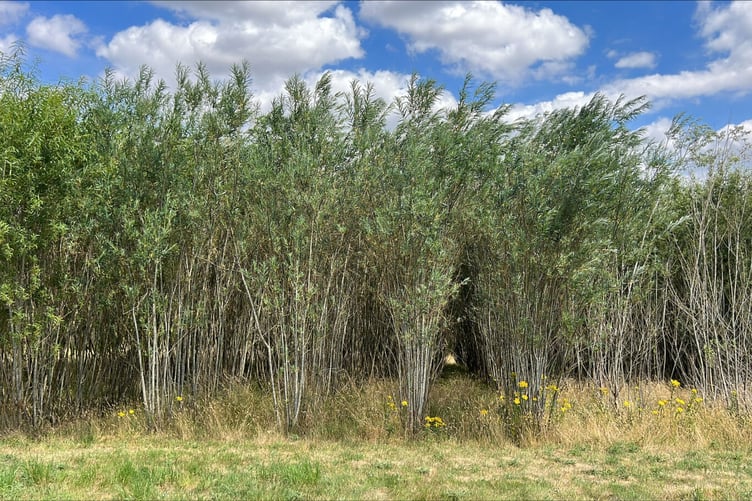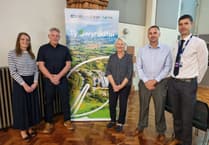Aberystwyth University researchers are exploring the potential of crops like willow and alder as alternative sources of income for farmers.
The initiative, part of a UK-wide effort, assesses the viability of biomass crops to improve farm revenues and environmental sustainability.
As part of the project, academics at Aberystwyth University have planted a wide range of fast-growing tree species tailored for shorter harvesting periods than traditional forests.
The research is looking at native species like willow, alder, and poplar, as well as exotic ones such as black locust (Robinia) and eucalyptus.
Other crops, such as miscanthus, reed canary grass, sida, and cup plant are also being grown in the trials just outside Aberystwyth.
Collectively referred to as biomass crops, these species have multiple uses, including heat and power generation, transport fuels, construction materials, and even cosmetics. They can also improve the health of soil and the wider ecosystem.
All these perennial species grow quickly, with some giving an income from harvest as quickly as two years after planting, while others take longer to mature.
The trials are conducted as part of the Biomass Connect project, funded by the UK Department for Energy Security and Net Zero.
Professor Iain Donnison, Head of IBERS at Aberystwyth University, said: “As part of the UK’s aim to reach net zero, biomass crops are one promising dimension that is yet to realise its full potential. As part of agricultural including agroforestry systems, for instance, biomass crops contribute in many ways, including by supporting pollinator populations, enhancing biodiversity, livestock shelter, reducing flood risk, improving water quality, sequestering soil carbon, and improving soil health.
“Despite these substantial benefits, the integration of biomass crops into agricultural systems remains underexplored, and the information available is limited. The aim of the Biomass Connect project is to provide that robust, independent information along with the potential economic and environmental benefits to landowners and land managers. We hope that this type of work will give a broad range of stakeholders all the information they need to be able to make decisions about growing these crops, and how they suit different climates and locations.”





Comments
This article has no comments yet. Be the first to leave a comment.